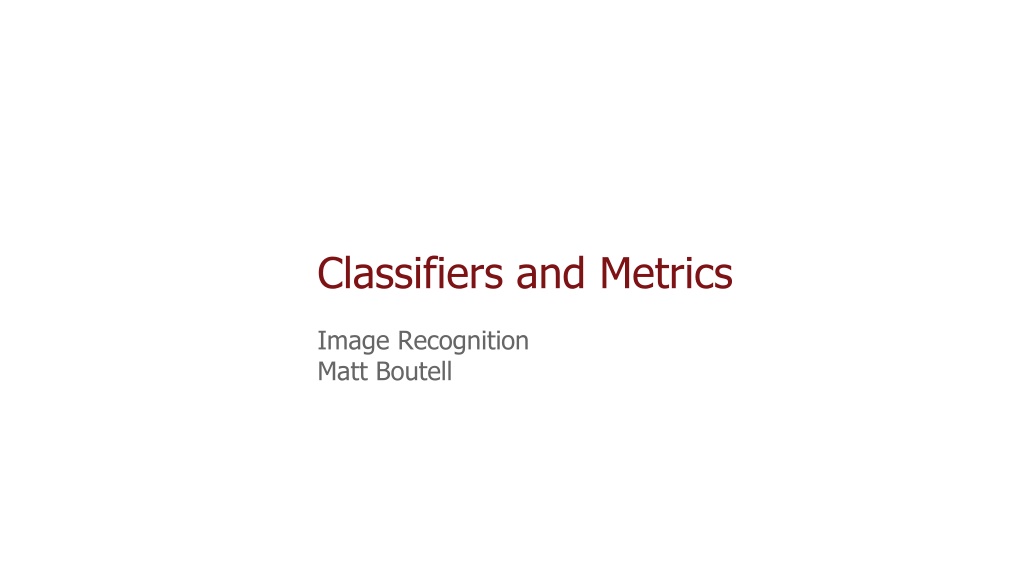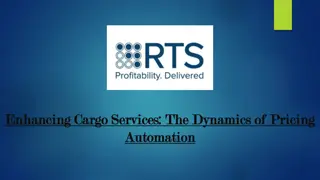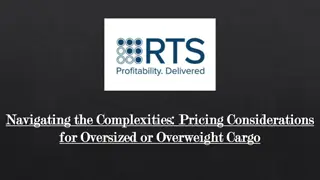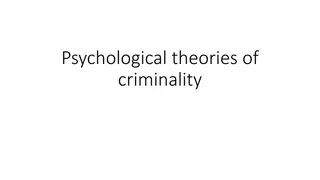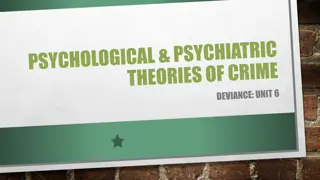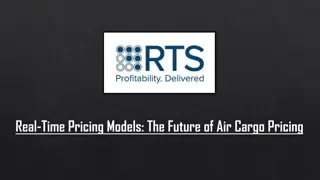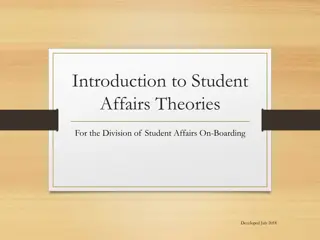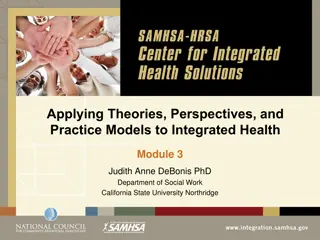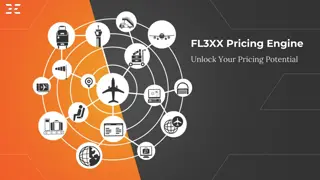Alternative Theories of Pricing Behavior
Two alternative theories - the Kinked Demand Curve Theory and Price Leadership - explain pricing behavior in oligopolistic markets. The Kinked Demand Curve Theory suggests that firms in an oligopoly tend to respond aggressively to price cuts but ignore price increases, leading to a stable price. On the other hand, Price Leadership occurs when a dominant firm sets the price, which smaller firms then follow to maintain profits. These strategies offer insights into how prices are determined in competitive markets.
Download Presentation

Please find below an Image/Link to download the presentation.
The content on the website is provided AS IS for your information and personal use only. It may not be sold, licensed, or shared on other websites without obtaining consent from the author.If you encounter any issues during the download, it is possible that the publisher has removed the file from their server.
You are allowed to download the files provided on this website for personal or commercial use, subject to the condition that they are used lawfully. All files are the property of their respective owners.
The content on the website is provided AS IS for your information and personal use only. It may not be sold, licensed, or shared on other websites without obtaining consent from the author.
E N D
Presentation Transcript
Classifiers and Metrics Image Recognition Matt Boutell
How do you classify data? You could use hand-tuned decision boundaries Fruit Banana Apples Oranges (.07, .1) (0.5, 1) H (.1, .13) (0.5, 1) (0, .02) | (0.3, 1) S V (0.7, 1) (.1, .5) (0.5, 1) You did in 3D (HSV) What if the decision boundaries were more complex? What if the data had not 3, but 100 dimensions? What if you had lots of labelled data you could train on?
Machine Learning is a big field: where will we focus? ML Unsupervised (clustering) Supervised (labels) Regression (predict number) Classification (predict label)
Nearest neighbor is a simple, non-parametric classifier Non-parametric? Assume we have a feature vector for each image (2D shown to right) Calculate distance from new test sample to each labeled training sample. Assign label as closest training sample (argmin) Generalize by assigning the same label as the majority of the k nearest neighbors. 2+ ?1,? ?2,? 2 ?? 2?, ?1 ?2 = ?1,? ?2,? ? 2 ?? ??, ?1 ?2 = ?1,? ?2,? ?=1
Example: classify sunsets using 294D features 1st2 moments in LST space on grid: Accuracy: 81.5% (vs 50% if guess) Pros: easy to run, no parameters to tune. Cons: slow classification, can overfit data, can't tune performance, need lots of examples to fill high dimensional space 0.4561 0.1928 0.2756 ? = 2+ ?1,? ?2,? 2 ?? 2?, ?1 ?2 = ?1,? ?2,? ? 2 ?? ??, ?1 ?2 = ?1,? ?2,? ?=1
Nearest Neighbor Decision Boundary Let's use this tool to investigate: http://ai6034.mit.edu/fall12/index.p hp?title=Demonstrations What shape do the pieces of the boundary have? Where are they located? How do you combine pieces?
Nearest class mean, using clusters, is more efficient Find class means and calculate distance to each mean Pro? Con? Partial solution: clustering Learning vector quantization (LVQ): tries to find optimal clusters. k-means is better. LVQ
How good is your classifier? Confusion matrix Detect True Yes No Examples: Object detection Disease detection 600 Total actual positive Yes 500 (true pos.) 100 (false neg.) 10000 (true neg.) Consider costs of false neg. vs. false pos. Lots of different error measures No 200 (false pos.) 10200 Total actual negative 700 10100 Total det. as neg. Total det. as pos.
How good is your classifier? Derived measures Detect True Yes No Accuracy = correct/all = 10500/10800 = 97%. Is 97% accuracy OK? True positive rate = TP/pos = 500/600=83% vs. false pos rate = FP/neg = 200/10200 = 2% Or Precision = TP / det-pos = 500/700=71% vs. recall (same as TPR) 600 Total actual positive 10200 Total actual negative Yes 500 (true pos.) 100 (false neg.) 10000 (true neg.) No 200 (false pos.) 700 10100 Total det. as neg. Total det. as pos.
ROC curves balance TPR vs FPR (or recall vs precision) The "Receiver-operating characteristic" is useful when you can change a threshold to get different true and false positive rates. Much more information recorded here, like: -How close to perfect is it? -What is the area under the curve? -If you require a certain FPR, what is the TPR?
How do you create an ROC curve? Label Feat t=0 t=1 t=-2 You need to be able to move a threshold, t, between what you the classifier calls + and -. + 2.9 + 2.8 + -1.2 - -3.1 - -1.5 - 0.3 - -0.5
How do you create an ROC curve? Label Feat t=0 t=1 t=-2 You need to be able to move a threshold, t, between what you the classifier calls + and -. + 2.9 TP TP TP + 2.8 TP TP TP + -1.2 FN FN TP If t=0, (TPR, FPR)= (__,__) If t=1, (TPR,FPR)=(__,__) It t = -2, (TPR,FPR)=(__,__) Plots with only 3 points don t look great - -3.1 TN TN TN - -1.5 TN TN FP - 0.3 FP TN FP - -0.5 TN TN FP
Same data set with more points: - - - + - + - - Label: + - ++ - ++ ++ +++ Feature: -3 -2 -1 0 1 2 3 Interpret above: Data point 1 has label -, value -3.1 If t == 0: TPR = ___, FPR = ___ True Pos Rate 9/12 2/8 7/12 1/8 If t == 1: TPR = ___, FPR = ___ Add more points, including extremes: t = -5 and t = 5. False Pos Rate
How do you create an ROC curve if you have more than one feature? Lab. Cls Out t=0 t=1 t=-2 Some classifiers output a single value that you can use: SVMs do. Neural nets do. Nearest neighbor doesn't. + 2.9 TP TP TP + 2.8 TP TP TP + -1.2 FN FN TP - -3.1 TN TN TN - -1.5 TN TN FP - 0.3 FP TN FP - -0.5 TN TN FP
Multiclass Confusion Matrices use TP, FP too. You can find recall and precision for each class. Detected Bch Sun FF Fld Mtn Urb Bch 169 0 2 3 12 14 True Sun 2 183 5 0 5 5 FF 3 6 176 6 4 5 Fld 15 0 1 173 11 0 Mtn 11 0 2 21 142 24 Urb 16 4 8 5 27 140 Beach recall: 169/(169+0+2+3+12+14)=84.5% Note confusion between mountain and urban classes due to features (similar colors and spatial layout)
